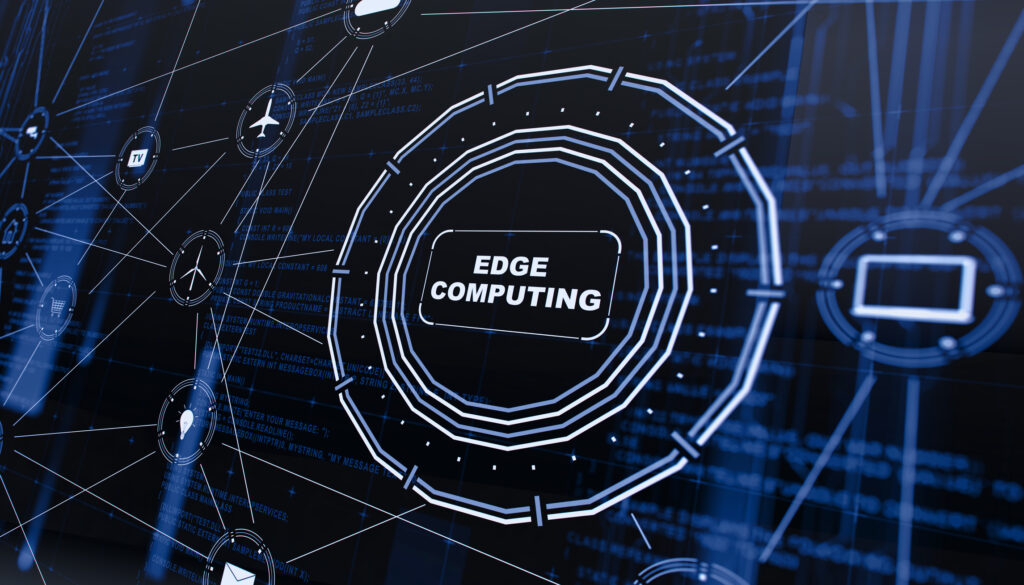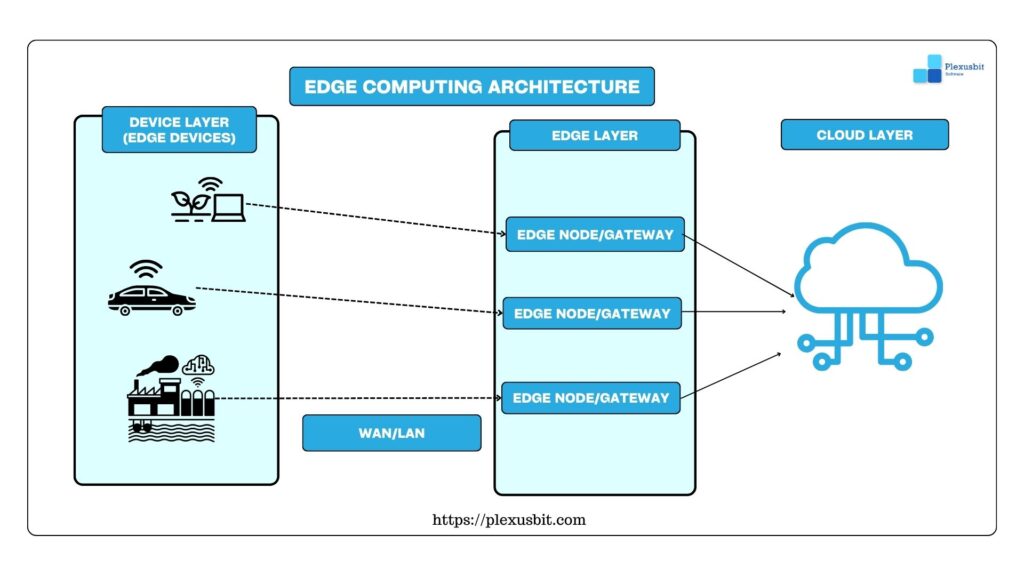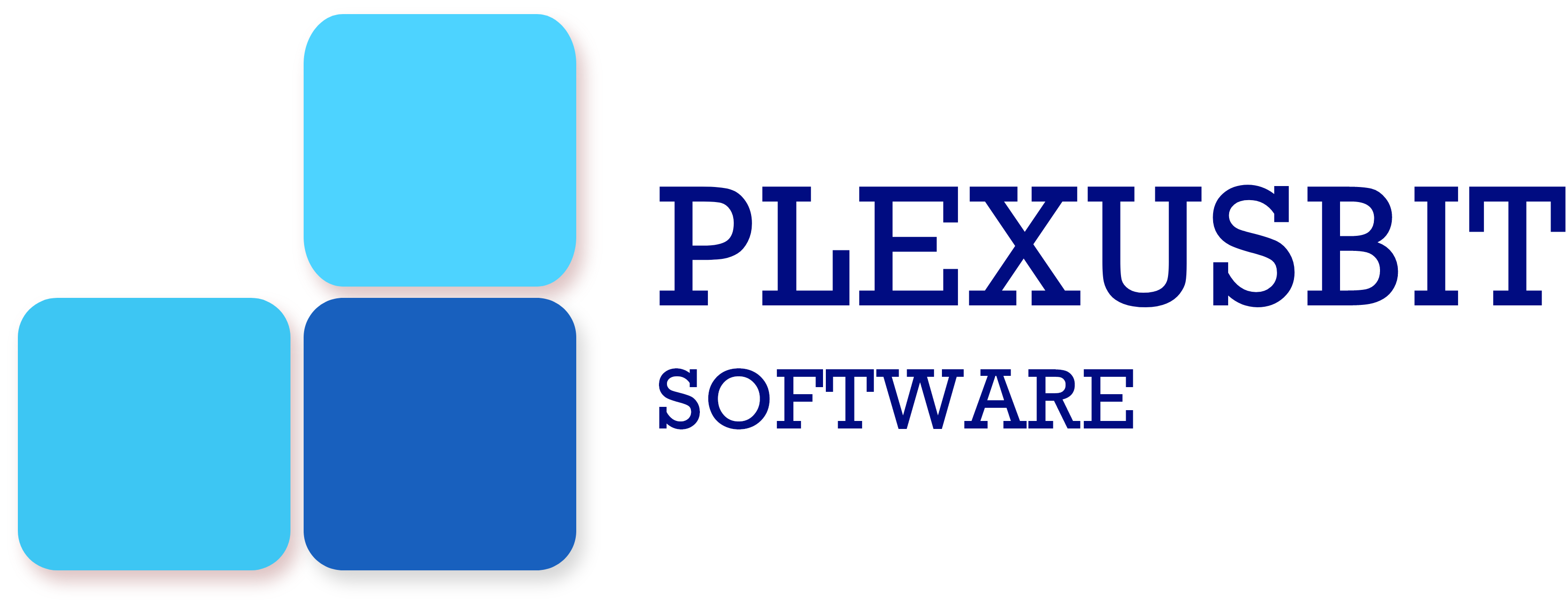
How many times have you found yourself frustrated, stuck in the crawl of traffic, imagining better use of your time? And not to forget the relentless honking ?
Let me take a guess — “Countless”!
We’ve all been there, held captive by the traditional traffic lights and their fixed timers.
But what if I told you it needn’t be so?
Imagine a city intersection behaving like a well-coordinated orchestra, traffic flowing smoothly as if every vehicle is playing its part effortlessly. Traffic lights act like conductors, adjusting in real-time to the changing flow. Sensors capture details, while smart devices make split-second decisions. Thus, turning our daily commutes into a harmonious journey through the city’s intricate score.
Pardon me for painting this dreamy picture, but this can be made possible by maestro of Edge Computing!
Now this is a simple illustration of how Edge Computing can revolutionize real-time decision-making in our daily lives. Beyond the traffic lights, Edge Computing is a transformative force in numerous critical applications.
Why Edge Computing?
Traditionally, IoT devices relied on a centralized cloud infrastructure for data processing and storage. However, as the number of connected devices soared and the volume of data generated by these devices skyrocketed, the limitations of centralized processing became apparent. This led to the inception of Edge Computing, a distributed computing model designed to address the challenges posed by latency, bandwidth, and security in IoT applications.
In Edge Computing, data processing is moved closer to the source of data generation — the “edge” of the network. This strategic shift enables faster decision-making, reduces latency, and minimizes the burden on the centralized cloud infrastructure. The result is a more efficient and responsive IoT ecosystem capable of meeting the demands of real-time applications.
Advantages of Edge computing in IoT business
- Reduced Dependency on Central Cloud: Edge Computing minimizes dependency by enabling local processing on devices or gateways. This reduces the impact of cloud outages, network latency, and potential service disruptions.
- Minimized Data Transfer to the Cloud: Edge Computing performs preprocessing locally and hence reduces data transfer to cloud. Only relevant information is transmitted to the cloud.
- Enhanced Privacy and Compliance: Edge Computing addresses privacy and compliance concerns by keeping sensitive data closer to its source. Thus, limits exposure to potential security threats during transmission.
- Real-time Decision-Making: Edge Computing enables real-time or near-real-time decision-making at the source of data generation. This real-time capability is critical for applications like autonomous vehicles, industrial automation, and emergency response systems.
- Optimized Resource Utilization: Edge Computing optimizes resource utilization by distributing processing tasks across the network edge. This helps reducing/eliminating potential bottlenecks and scalability challenges.
- Operational Efficiency in Remote Locations: In scenarios where IoT devices operate in remote locations with limited connectivity, Edge Computing excels. Traditional setups may struggle in such environments due to dependence on constant cloud connectivity. Edge Computing allows devices to operate independently and efficiently in remote or challenging settings.
- Cost Reduction: Edge Computing can contribute to cost reduction by minimizing data transfer costs associated with transmitting large volumes of data to and from the cloud. Local processing also reduces the need for extensive cloud resources.
The Core Principles of Edge Computing
Edge computing is the process of bringing information storage and computing abilities closer to the devices that produce that information and the users who consume it. The main goal of edge computing is to reduce latency requirements while processing data and saving network costs.
Proximity to Data Source
At the heart of Edge Computing is the concept of proximity. Unlike traditional cloud computing, where data travels to a remote server for processing, Edge Computing brings computation closer to the devices generating the data. This proximity minimizes the latency associated with data transmission, making it ideal for applications requiring near-instantaneous response times.
Decentralized Processing
Edge Computing distributes computing tasks across a network of devices rather than relying on a single central server. This decentralized approach not only enhances speed but also improves system reliability. If one device fails, others in the network can continue processing data, ensuring uninterrupted operation.
Real-time Decision-Making
The ability to process data at the edge facilitates real-time decision-making. This is critical for applications such as autonomous vehicles, smart grids, and healthcare monitoring, where split-second decisions can have significant consequences. Edge Computing empowers IoT devices to analyze data on the spot and respond instantly, enhancing the overall efficiency and performance of the system.

Architecture of Edge Computing
Device Layer:
At the base of the architecture are edge devices, such as IoT sensors, cameras, and other connected devices. These devices generate data from the physical world, serving as the initial source of information. They are equipped with processing capabilities to perform local computations and basic analysis on the data they collect.
Edge Node or Gateway Layer:
The next layer consists of edge nodes or gateways, acting as intermediaries between edge devices and the central cloud. Edge nodes are responsible for collecting data from multiple devices, preprocessing it locally, and transmitting relevant information to higher-level computing layers. They may perform tasks like data filtering, aggregation, or running lightweight analytics. It supports applications that require real-time or near-real-time decision-making.
Communication Networks:
Robust communication networks connect edge devices, edge nodes, and the central cloud infrastructure. These networks facilitate the flow of data between layers, ensuring reliable and low-latency communication. Various communication protocols are utilized to transmit data efficiently.
Cloud Layer:
The top layer of the architecture is the central cloud. While Edge Computing emphasises local processing, there is often a connection to the cloud for tasks that require extensive computing resources, historical data analysis, or long-term storage. This layer serves as a centralized hub for aggregated data and supports resource-intensive applications.
In above architecture, data flows seamlessly through its layers, starting with edge devices generating real-time information. This raw data is then transmitted to the edge infrastructure, where local processing occurs, allowing for quick and responsive decision-making. Processed insights and relevant information are subsequently relayed to the cloud for in-depth analysis, long-term storage, and resource-intensive tasks. The communication networks between these layers form the backbone, facilitating the swift and reliable transmission of data across the entire Edge Computing ecosystem.
Use Cases of Edge Computing in IoT
Remote Industry Operations:
Industries operating in remote or challenging environments leverage Edge Computing for mission-critical applications. For example, oil and gas facilities in remote locations use Edge Computing to process data from sensors on-site. This local processing ensures continuous monitoring, early detection of anomalies, and swift response to potential safety issues. This minimizes risks without relying on constant connectivity to a central server.
Autonomous Vehicles:
The automotive industry relies on Edge Computing for the evolution of autonomous vehicles. In this context, onboard Edge Computing systems process data from various sensors in real-time. This enables instantaneous decision-making for navigation, obstacle detection, and collision avoidance. This ensures the safety and efficiency of autonomous driving without dependence on external servers.
Point-of-Sale (POS) Systems:
At the point of sale, efficiency is critical for customer satisfaction and operational success. Edge Computing is utilized in POS systems to process transactions locally, ensuring quick and reliable payment processing even in cases of intermittent or slow network connectivity. This critical functionality enables uninterrupted and efficient checkouts, contributing to a positive customer experience without heavy reliance on constant connectivity to a central server.
Smart Cities
Edge Computing plays a pivotal role in the development of smart cities. From intelligent traffic management and public safety monitoring to waste management and environmental sensing, Edge Computing enables real-time decision-making at the edge for efficient city operations.
Healthcare
Edge Computing is transforming healthcare by enabling real-time monitoring and analysis of patient data. Wearable devices, remote patient monitoring systems, and healthcare IoT applications leverage Edge Computing to provide timely insights to healthcare professionals, improving patient care and outcomes.
Retail
Retailers use Edge Computing to enhance customer experiences and optimize operations. From inventory management and supply chain logistics to personalized shopping experiences through IoT-connected devices, Edge Computing contributes to the efficiency and responsiveness of the retail sector.
Agriculture
In precision agriculture, Edge Computing facilitates on-the-spot analysis of data from sensors and drones. This enables farmers to make informed decisions about irrigation, fertilization, and crop management, ultimately improving yields and resource utilization.
Challenges in Edge Computing
While Edge Computing brings a myriad of benefits to IoT applications, it also presents certain challenges that must be taken into consideration.
Security Concerns
Decentralized processing raises security concerns, especially when handling sensitive data. Implementing robust encryption, authentication, and access control measures are essential to mitigate security risks in Edge Computing environments.
Scalability
Scalability can be a challenge when deploying Edge Computing solutions, particularly in large-scale IoT deployments. Organizations need to design their edge infrastructure to accommodate growing numbers of devices and increasing data volumes.
Standardization
The lack of standardized protocols and frameworks for Edge Computing poses interoperability challenges. To ensure seamless integration of diverse edge devices and platforms, industry-wide standardization efforts are crucial.
Management and Orchestration
Managing a distributed edge infrastructure requires efficient orchestration and management tools. Businesses need to invest in solutions that enable seamless coordination, monitoring, and maintenance of edge devices and nodes.
As we move into an era where the Internet of Things continues to reshape our world, the fusion of Edge Computing with IoT holds the promise of unlocking unprecedented possibilities. By embracing this transformative technology, IoT services companies can not only meet the demands of today’s interconnected world but also pave the way for a future where intelligence is distributed, responsive, and seamlessly integrated into the fabric of our everyday lives.
